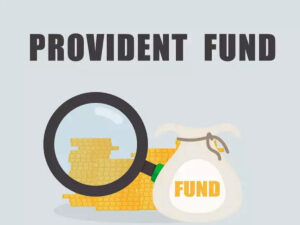 The interest earned, on PF contributions in excess of Rs 2.5 lakh per annum, has now been made taxable. Should you reduce your PF contributions then? Read on to understand the implications.
The interest earned, on PF contributions in excess of Rs 2.5 lakh per annum, has now been made taxable. Should you reduce your PF contributions then? Read on to understand the implications.
Individuals working in the organised sector have Employees Provident Fund (EPF or PF) as one of the retirement savings option, which provides reasonably assured returns and tax benefits. Tax exemptions are available on the contributions made on the accruals as well as on withdrawals (popularly known as EEE or Exempt, Exempt, Exempt scheme).
In recent times, however, the government has brought in amendments to the tax benefits available under the scheme towards Employer (ER) and Employee (EE) contributions to provident fund.
Employer Contributions To PF
Employer contribution to Provident Fund (PF), NPS and superannuation aggregating to Rs 7.5 lakh is tax exempt. Contributions beyond this limit, along with accretions (i.e., interest, dividend, etc.) on such excess contribution is now taxable as salary income effective from FY 2020-21.
Employers now have the additional responsibility of determining the accretions on such taxable contributions, withhold taxes on such additional contributions and accretions, and report these incomes in Form 16 and Form 12BA. Needless to emphasise, employees need to report these in the Income Tax Return, too. It is also important to identify this taxable corpus separately, since all future accretions to the same are taxable.
Employee Contributions To PF
With the objective of limiting the tax benefits available to members with high contribution levels, Budget 2021 had expanded the taxability of PF to cover interest earned on employee contributions, where the annual employee contribution exceeded Rs 2.5 lakh per financial year (Rs 5 lakh in cases where there is no contribution by the employer, relevant to government employees) effective from FY 2021-22.
The annual limit of Rs 2.5 lakh would include voluntary contributions as well, and is taxable even if the PF contributory period exceeds five years.
Such interest income is taxable as “Income from other sources”, which may be subject to a tax withholding. Employees will need to report the annual taxable interest in the tax return (the tax return forms released for the year now requires employees to report this income separately under the schedule “Income from other sources”), determine whether taxes withheld are sufficient, or whether there is a need to remit taxes in advance or as self-assessment tax. Employees also have the option of declaring their personal income to the employer, so that tax obligations on such income are adequately covered.
Taxpayers have the option to consider “income from other sources” either on accrual basis or on cash basis in the tax return. Taxpayers would need to claim the taxes withheld in the relevant tax years in which the income is offered to tax. Advance tax/self-assessment tax obligations need to be aligned to the same.
Should Employees Consider Reducing Their PF Contributions?
Under the PF scheme, the contributions are limited to 12 per cent of the statutory wage ceiling of Rs. 15,000 per month, and it is not mandatory to contribute on the entire basic salary. Here is an example to illustrate the tax impact, if such a choice is adopted.
|
Particulars
|
Reference
|
PF Contributions |
|||
|
On Actual Basic |
On Wage Ceiling Limit- |
||||
|
CTC |
Tax Impact |
CTC |
Tax Impact |
||
|
Total CTC |
|
50,00,000 |
|
50,00,000 |
|
|
Basic salary @ 50% of CTC |
A |
25,00,000 |
25,00,000 |
25,00,000 |
25,00,000 |
|
Employer Contribution to PF @ 12% |
B |
3,00,000 |
1,75,000 |
21,600 |
– |
|
NPS (10% of basic) |
2,50,000 |
2,50,000 |
|||
|
Superannuation Fund |
3,75,000 |
3,75,000 |
|||
|
Special Allowance |
C |
15,75,000 |
15,75,000 |
18,53,400 |
18,53,400 |
|
Taxable salary income |
D (A+B+C) |
|
42,50,000 |
|
43,53,400 |
|
Less: Deduction U/s 80C- Employee Contribution to PF |
E |
|
1,50,000 |
|
21,600 |
|
Total Taxable Income |
F (D-E) |
|
41,00,000 |
|
43,31,800 |
|
Tax on above @ 31.2% |
G (F*31.2%) |
|
12,79,200 |
|
13,51,522 |
|
|
|||||
|
Particulars |
Reference |
Amount (Rs) |
Amount(Rs) |
Amount (Rs) |
Amount(Rs) |
|
Employee Contributions to PF in excess of Rs 2,50,000 |
H |
50,000 |
|
0 |
|
|
Interest on above @ 8.10% |
I=H*8.10% |
4,050 |
|
0 |
|
|
Tax on interest @ 31.2% |
J =I*31.2% |
|
1,264 |
|
0 |
|
Total Tax (G+J) |
|
|
12,80,464 |
|
13,51,522 |
Note: Flat tax rate of 31.2 per cent has been considered, Interest on Employee PF contribution has been considered at a flat rate (ignoring the compounding monthly pay out, etc.) for simplicity purposes. Also, no accretions have been computed on employer contributions to specified funds considering the sequential allocation.
It can be seen from the above example that one loses certain tax benefits while reducing his/her PF contribution. This is why employees are well advised to understand the overall impact before determining to reduce PF contributions.
Saraswathi Kasturirangan is Partner with Deloitte and Prashanth G is Manager with Deloitte Haskins and Sells LLP
Source: https://www.outlookindia.com/business/recent-changes-in-income-tax-on-provident-fund-contributions-news-189986
© 2018 CA Chandan Agarwal. All rights reserved.